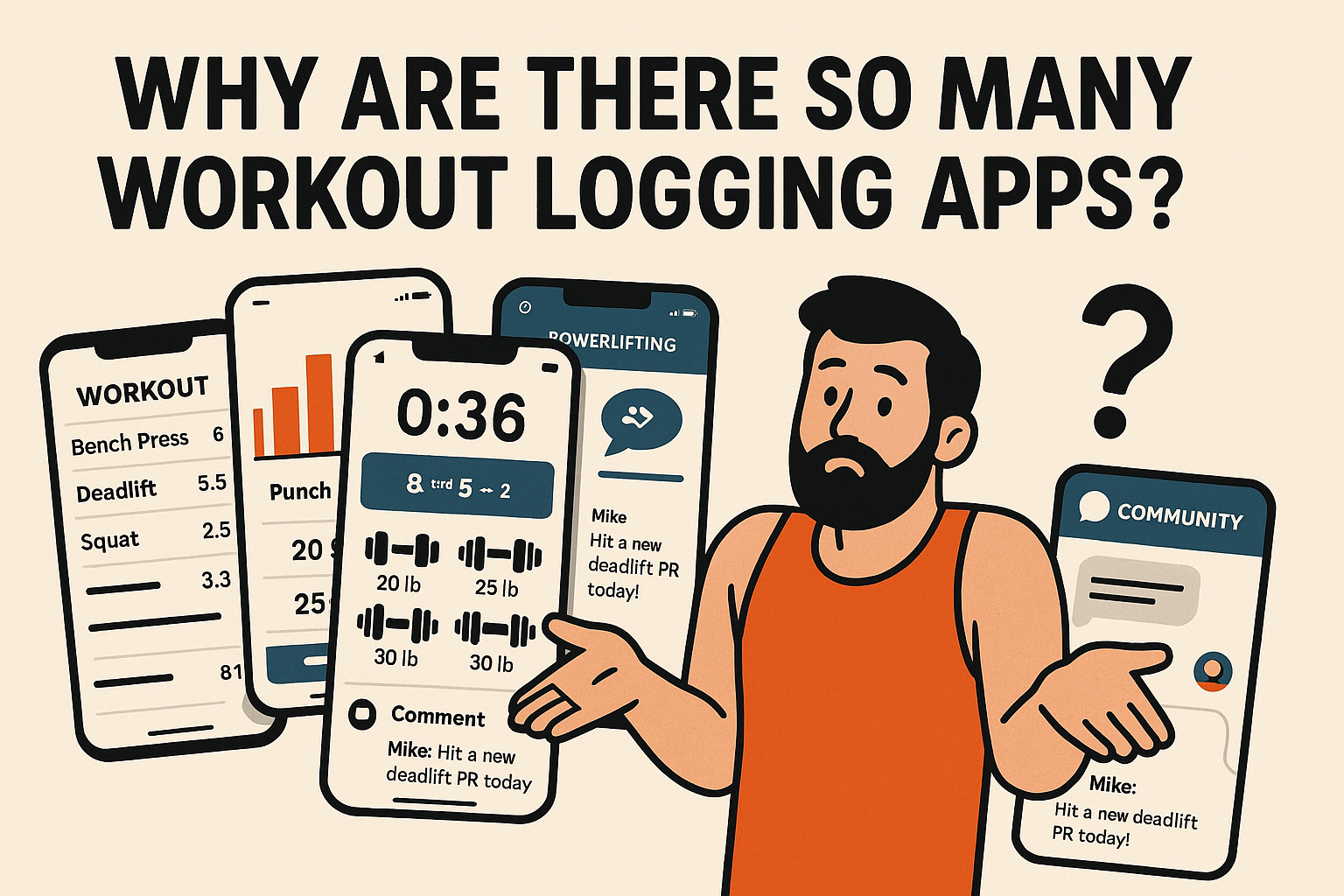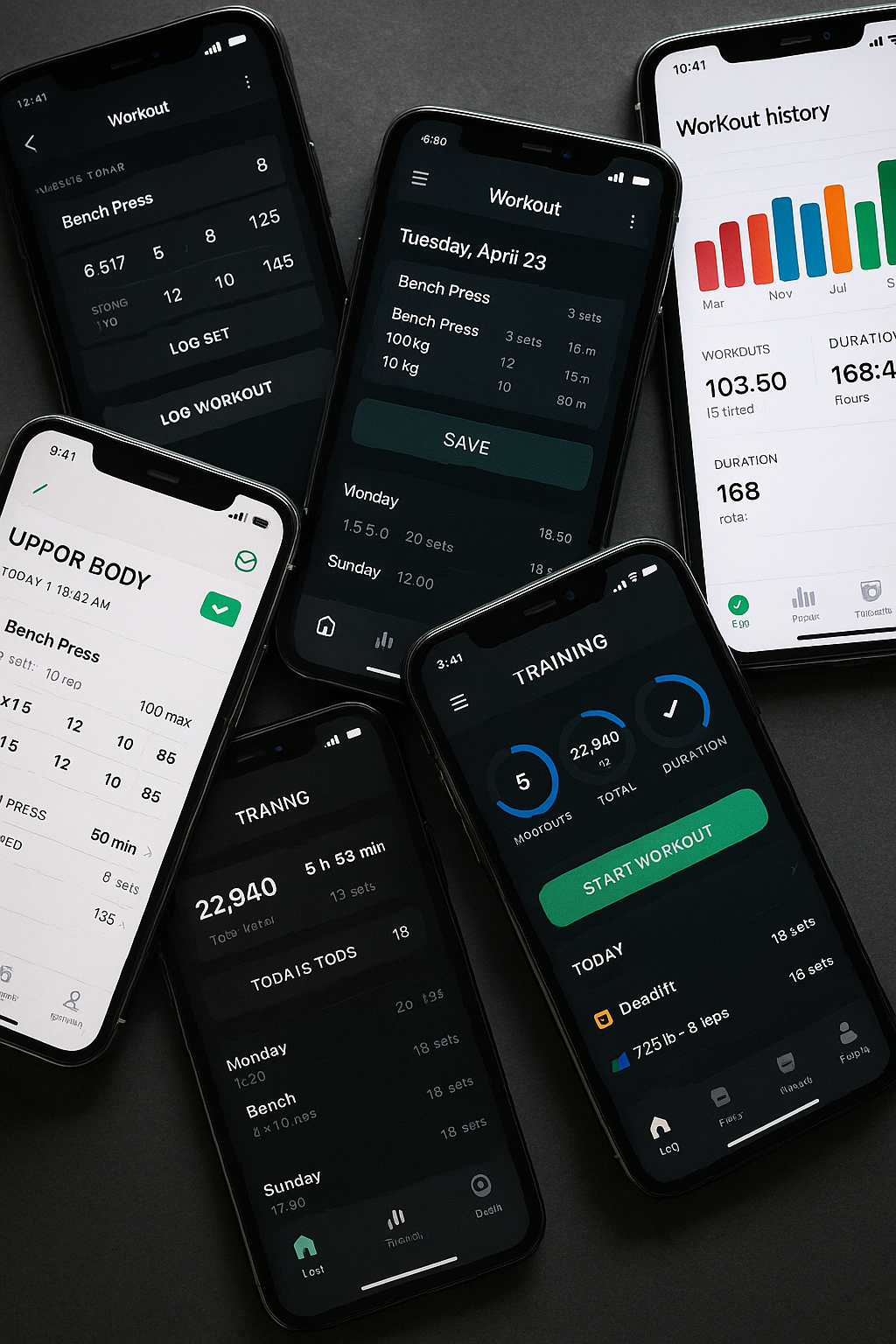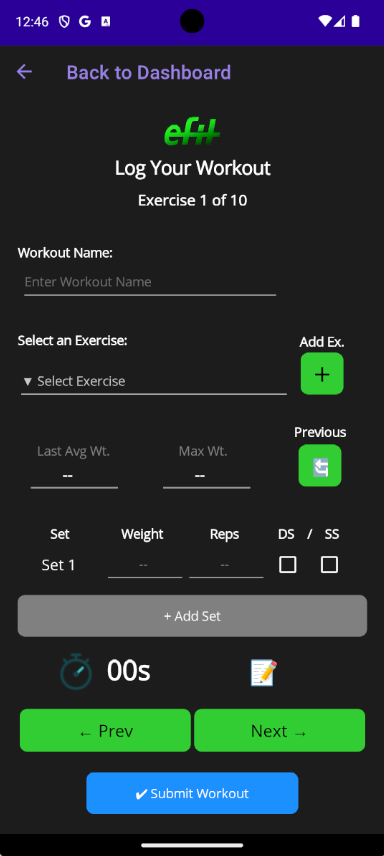Why So Many Fitness Logging Apps Exist
(And Why I Still Think eFitLog Is the Best)

Why Are There So Many Workout Logging Apps?

If you’ve ever gone searching for a workout logging app, you’ve probably noticed something: there are a lot of them. Scroll through the App Store or Google Play and you’ll find dozens (if not hundreds) of options promising to track your lifts, plan your routines, and “revolutionize” your training.
On the surface, that abundance looks like a good thing. More options should mean more innovation, right? But it also raises a real question: why are there so many workout logging apps (let me explain) — and what makes one truly stand out?
1) Universal problem, personal solutions
Almost everyone who exercises eventually hits the same challenge: how do I record what I did so I can visualize and track progress? Because the need is universal, developers from all backgrounds — solo coders, indie fitness enthusiasts, and big fitness brands alike — have all taken a swing at solving it. And since logging is personal, each solution reflects its creator’s habits and vision.
2) Different audiences, different “ideal” logbooks
Powerlifters want exact PR history and volume charts. Casual gym-goers just want a quick way to remember last week’s weights. Trainers want dashboards for their clients. Some users want social/community features; others want absolute privacy. Because no single app can perfectly serve all of those groups, new ones keep popping up to fill every niche.
3) Low barrier to entry
At a technical level, a logbook app isn’t overly complicated (says the dev that spent nearly three years creating one) — a database, a few charts, and a clean UI are enough to get something functional. That’s why you see so many indie projects and side hustles in this space, often overlapping heavily in features.
4) Big market, big incentives
The fitness market is enormous, which creates monetization opportunities. An app that earns loyalty can monetize through subscriptions, ads, or premium upgrades. That incentive keeps the flood of new entrants coming.
Why I Still Think eFitLog Is the Best
I built eFitLog for the same reason many of those other apps exist: none of the options I tried matched what I felt I needed—and especially what I wanted—in a logging and workout app. I wanted something that gave me all the information I needed, right when, and more importantly where, I needed it—without forcing me into a signup form, a subscription wall, or an endless scroll of screens. That frustration is what sparked eFitLog — and it’s also what shaped its core principles.
Great UI/UX — Everything on One Screen
The workout entry page is designed to feel like home base. Instead of bouncing between tabs or pop-ups, you see everything in one clean view. Its all there, and by all I am talking about: Workout name, current exercise, past average, all-time max, sets, reps, weight, exercise and workout history, the ability to add any exercise on the fly, a rest or workout timer, notes, and even checkboxes to annotate supersets and drop sets. Nothing is hidden three menus deep, nothing interrupts your flow. And if that sounds like a lot, well thats because it is - alot. Just a quick glance at the screen and it doesn’t feel like it. It’s so well designed that it almost feels like its nothing special at all. It’s also the closest digital equivalent to a paper logbook I could create — simple, immediate, and familiar — but backed up with the added power of charts, stats, and milestone tracking that only a well-structured database and advanced software can provide.

This design choice wasn’t accidental. I built eFitLog around how a real workout actually feels: sweaty hands, shaky grip, headphones in, a rack waiting. In that moment, you don’t want to navigate through six screens — you just want to glance, tap, and move. That’s why eFitLog’s UI/UX is consistently praised as “everything you need, nothing you don’t.”
Offline-First Convenience
One of my biggest frustrations with other apps was how fragile they felt in the real world. No Wi-Fi in the garage? Spotty 5G in a basement gym? Suddenly the “log” button greys out, or worse — the app crashes. That never made sense to me. Why should recording a set of squats require an internet connection?
eFitLog is built to be 100% offline-ready. Your data lives locally, so you can log anywhere, anytime — even in airplane mode. Whether you’re deployed overseas, working out in a dead zone, or just wanting to keep your phone off the grid, eFitLog doesn’t punish you for being disconnected. When you want to export or back up, that’s your choice.
Privacy-First Trust
In a world where every app seems to want your email, your habits, and your browsing data, eFitLog takes the opposite approach.
- No account required
- No ads
- No data collection
Your workouts are yours — stored on your device, controlled by you. If you delete the app, your data goes with it. If you keep it, it stays local unless you decide to export it. Fitness is personal. You don’t need a company profile to squat, and you don’t need a cloud login to track it.
The Bottom Line
eFitLog combines the best of both worlds: the clarity and reliability of an old-school paper logbook with the power of modern analytics. It’s simple when you need it to be simple, and deep when you want insights. That combination — simplicity, reliability, and trust — is why I believe eFitLog stands out in a crowded field.
Because at the end of the day, your workout should be more about your goals - lifting more, moving better, getting stronger, crushing goals, and tracking and visualizing progress — and less about fighting with your logging app.